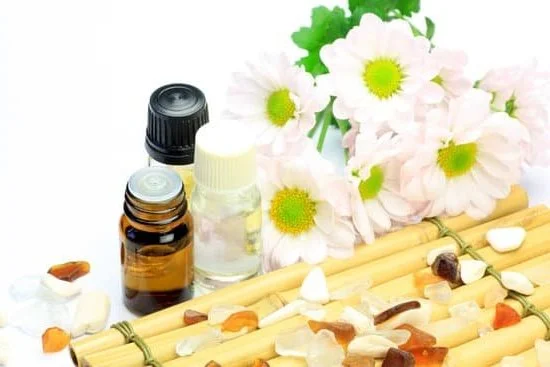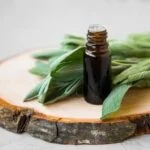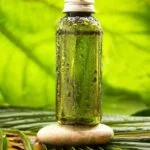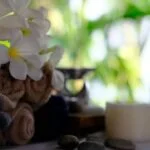Aromatherapy has become increasingly popular in recent years as a way to promote relaxation, improve mood, and enhance overall well-being. And one of the most effective ways to experience the benefits of aromatherapy is through the use of an aromatherapy diffuser.
Aromatherapy diffusers are devices that disperse essential oils into the air, allowing their fragrance and therapeutic properties to be inhaled and absorbed by the body. Whether you’re new to aromatherapy or have some experience with essential oils, understanding how to use an aromatherapy diffuser is key to maximizing its benefits.
In this beginner’s guide, we will explore different types of aromatherapy diffusers, including ultrasonic diffusers, nebulizing diffusers, and heat-based diffusers. We will also discuss the importance of choosing pure essential oils and provide tips on blending them for different effects. Additionally, we will cover how to prepare your diffuser for use, create the perfect ambiance for aromatherapy sessions, and ensure safety considerations while using your diffuser.
By following step-by-step instructions on how to fill your diffuser with water and essential oils, adjusting settings for optimal diffusion, and incorporating personalized recipes for stress relief or better sleep, you’ll be well on your way to enjoying all the wonderful benefits that aromatherapy has to offer. So let’s dive in and discover how you can make the most out of your aromatherapy diffuser journey.
Understanding the Different Types of Aromatherapy Diffusers
Exploring Ultrasonic Diffusers
Ultrasonic diffusers are one of the most popular types of aromatherapy diffusers on the market. These diffusers work by using electronic frequencies to create vibrations in water, which then disperses a fine mist of water and essential oil into the air.
One key advantage of ultrasonic diffusers is that they preserve the therapeutic properties of essential oils by not using heat, making them an ideal choice for those who want to experience the full benefits of their chosen oils. Additionally, ultrasonic diffusers often have adjustable timers and settings for customization and convenience.
Examining Nebulizing Diffusers
Nebulizing diffusers are another type of popular aromatherapy diffuser. Unlike ultrasonic or heat-based diffusers, nebulizing diffusers do not require water or heat to disperse essential oils into the air. Instead, they use an atomizer to break down the oil into microscopic particles, creating a fine mist that is released directly into the air.
This method ensures that essential oils remain in their purest form without dilution from water or alteration from heat. Nebulizing diffusers are often favored for their strong scent dispersion capabilities and ability to quickly fill a room with aromatic goodness.
Highlighting Heat-Based Diffusers
Heat-based diffusers rely on either electricity or flame to gently warm essential oils and release their aroma into the air. Electric heat-based diffusers usually have a small tray or dish where users can place a few drops of essential oil, which is then heated by a built-in heating element.
Candle-powered heat-based diffusers typically involve placing a dish or bowl on top of a candle’s flame which heats up the oil and allows it to evaporate slowly.
These types of diffusers are valued for their affordability and simplicity, as well as their ability to create a cozy, calming atmosphere. However, it’s important to note that heat-based diffusers may alter the chemical composition of some essential oils, so it’s recommended to use them with caution and follow manufacturer instructions carefully.
Choosing the Right Essential Oils for Aromatherapy Diffusers
When it comes to using an aromatherapy diffuser, selecting the right essential oils is crucial for achieving the desired therapeutic benefits. In this section, we will explore the importance of pure essential oils, discuss popular essential oils and their benefits, and offer tips on blending essential oils for different effects.
The Importance of Pure Essential Oils
To fully experience the healing properties of aromatherapy, it is essential to use pure, high-quality essential oils. Synthetic or diluted oils may not provide the same therapeutic effects and can even contain harmful chemicals. When purchasing essential oils, look for reputable brands that provide information on their sourcing methods and testing procedures. Organic certification can also be an added assurance of purity.
Popular Essential Oils and Their Benefits
There is a wide range of essential oils available, each with its own unique properties and benefits. Some popular options include:
- Lavender: Known for its calming and relaxing effects, lavender oil can help reduce stress, promote sleep, and alleviate anxiety.
- Peppermint: With its refreshing scent, peppermint oil can enhance focus and energy levels. It may also aid in relieving headaches and indigestion.
- Eucalyptus: Often used for respiratory issues, eucalyptus oil can clear nasal congestion and promote easier breathing. It also has antibacterial properties.
- Lemon: Known for its uplifting aroma, lemon oil can boost mood and improve mental clarity. It may also have cleansing properties when used topically.
Tips on Blending Essential Oils for Different Effects
One of the joys of using an aromatherapy diffuser is experimenting with different blends to create unique effects. Here are some tips to consider when blending essential oils:
- Start with a base note: Choose a calming oil like lavender or chamomile as a base for relaxation blends or a bright oil like lemon or bergamot for energizing blends.
- Add complementary scents: Middle notes like rosemary, ylang-ylang, or geranium can enhance the overall fragrance and add depth to your blend.
- Use caution with potent oils: Some essential oils, such as cinnamon or clove, are highly concentrated and should be used sparingly. Mix them with milder oils to avoid overpowering scents.
By understanding the importance of pure essential oils, exploring popular options and their benefits, and experimenting with different blends, you can create a personalized aromatherapy experience that suits your needs and preferences.
Preparing Your Aromatherapy Diffuser for Use
Before you can begin enjoying the benefits of aromatherapy with your diffuser, it is important to properly prepare your device for use. By following a few essential steps, you can ensure that your diffuser functions optimally and delivers the desired aroma throughout your space.
First and foremost, it is crucial to clean and maintain your aromatherapy diffuser regularly. This not only helps to prevent any buildup of residue or oils but also extends the lifespan of your device. To clean your diffuser, start by unplugging it and emptying any remaining water from the reservoir.
Use a soft cloth or cotton swab to wipe down the interior and exterior of the diffuser, removing any excess oil or residue. For a deeper clean, consider soaking the parts in warm, soapy water before rinsing them thoroughly.
Once your diffuser is clean, it is important to assemble and set up the device correctly. Follow the manufacturer’s instructions carefully to ensure that all components are properly connected. Some essential steps to check during setup include verifying that all seals are tight, ensuring proper alignment of parts, and confirming that all buttons or knobs are in their correct positions. By completing these setup checks, you can avoid any potential leaks or malfunctions while enjoying your aromatherapy experience.
In addition to cleaning and setup, it is necessary to address common troubleshooting issues that may arise with aromatherapy diffusers. For example, if you notice weak diffusion or no mist output from your device, start by checking that there is an adequate water level in the reservoir.
Additionally, ensure that you have added enough drops of essential oil for desired fragrance strength. If these steps do not resolve the issue, consult the troubleshooting guide provided by the manufacturer or contact their customer support for further assistance.
By taking these essential steps to prepare your aromatherapy diffuser for use – cleaning and maintenance, proper assembly and setup, and troubleshooting – you can ensure that your device functions at its best. Now that your diffuser is ready, it’s time to move on to the next section where we will explore techniques to create the perfect ambiance for your aromatherapy experience.
The Art of Aromatherapy
Creating the perfect ambiance is an essential aspect of using an aromatherapy diffuser. By combining aromatic scents with complementary elements, you can enhance relaxation or focus and create a soothing environment. Here are some techniques to help you maximize the benefits of aromatherapy:
- Enhancing relaxation or focus: Aromatherapy can be used to promote relaxation or increase focus, depending on your needs. For relaxation, consider diffusing lavender or chamomile essential oils, known for their calming properties. To enhance focus and concentration, try energizing scents like rosemary or peppermint.
- Complementary elements: To fully immerse yourself in the aromatherapy experience, consider incorporating other elements that complement the scents. Dim lighting can create a cozy and peaceful atmosphere, while soft instrumental music or nature sounds can further enhance relaxation.
- Diffusing at different times of the day: The benefits of diffusing essential oils can vary depending on the time of day. In the morning, uplifting scents like citrus oils can help boost energy levels and set a positive tone for the day ahead. In the evening, calming scents like lavender or ylang-ylang promote relaxation and prepare your mind and body for sleep.
To fully enjoy the art of aromatherapy and create the perfect ambiance, it’s important to experiment with different essential oil combinations and complementary elements to find what works best for you. Remember that everyone’s preferences are unique, so don’t be afraid to personalize your aromatherapy experience according to your needs and desires.
Step-by-Step Guide
Using an aromatherapy diffuser is a simple and effective way to enjoy the benefits of essential oils. By following a few easy steps, you can create a soothing and fragrant environment in your home or office. Here is a step-by-step guide on how to use an aromatherapy diffuser:
- Filling the Diffuser: Start by removing the cover or lid of your diffuser. Most diffusers have a water tank that needs to be filled with clean, room-temperature water. Use the measuring cup or fill line provided to add the appropriate amount of water into the tank. Be careful not to exceed the maximum fill line.
- Adding Essential Oils: After filling the diffuser with water, it’s time to add your desired essential oils. Use about 5-10 drops of essential oil for every 100ml of water in your diffuser. You can adjust this ratio based on personal preference and the size of your room. It’s important to note that pure essential oils should be used for optimal results.
- Turning on the Diffuser: Once you have added water and essential oils, place the cover or lid back onto the diffuser securely. Plug in your diffuser and turn it on by pressing the power button or switch. Some diffusers may have additional settings such as timer options or adjustable mist levels.
- Enjoying the Aromatherapy Experience: As soon as you turn on your diffuser, you will notice a fine mist being released into the air along with the aroma of the essential oils. Sit back, relax, and breathe deeply, allowing yourself to fully immerse in the therapeutic benefits of aromatherapy.
It is recommended to diffuse essential oils for around 30 minutes to 1 hour at a time, depending on your personal preference and needs. If using essential oils specifically for sleep or relaxation purposes, it’s ideal to start diffusion about 30 minutes before bedtime to create a calming ambiance in your bedroom.
Remember to clean your diffuser regularly to ensure optimal performance and longevity. Refer to the manufacturer’s instructions for specific cleaning guidelines. With this step-by-step guide, you can easily enjoy the benefits of aromatherapy using an aromatherapy diffuser in your daily routine.
Maximizing Aromatherapy Benefits
Aromatherapy diffusers are not only a great way to fill your space with delightful scents, but they can also provide numerous health and wellness benefits. One of the best things about using an aromatherapy diffuser is that you have the freedom to create your own unique blends of essential oils based on your specific needs and preferences. By tailoring diffuser recipes to your needs, you can maximize the aromatherapy benefits and further enhance your well-being.
To get started with creating your own custom diffuser recipe, it’s important to have a good understanding of different essential oils and their therapeutic properties. Some popular essential oils and their benefits include:
- Lavender: Known for its calming and relaxing effects, lavender oil is often used for stress relief, better sleep, and anxiety reduction.
- Peppermint: Invigorating and energizing, peppermint oil is commonly used to improve focus, alleviate headaches, and soothe digestion.
- Eucalyptus: With its refreshing scent, eucalyptus oil is excellent for respiratory support and clearing congestion.
- Lemon: Known for its uplifting properties, lemon oil can enhance mood, promote mental clarity, and support immune health.
Once you have chosen your desired essential oils, you can experiment with blending them together to create unique aromas and effects. Here are some tips for blending essential oils:
- Start with a base note: Base notes tend to be strong scents that are long-lasting. Some examples of base notes include woodsy scents like cedarwood or earthy scents like patchouli.
- Add middle notes: Middle notes provide balance between the base note and top note. Floral scents like rose or herbal scents like rosemary often work well as middle notes.
- Finish with a top note: Top notes are light scents that are usually the first to be noticed. Examples of top notes include citrus scents like bergamot or fruity scents like grapefruit.
| Recipe | Ingredients |
|---|---|
| Stress Relief | Lavender, Bergamot, Frankincense |
| Better Sleep | Lavender, Cedarwood, Vetiver |
| Mood Enhancement | Grapefruit, Bergamot, Rosemary |
Remember to always use high-quality, pure essential oils and follow recommended usage guidelines. By tailoring diffuser recipes to your needs, you can create a personalized aromatherapy experience that supports your overall well-being and enhances your living space with delightful scents.
Essential Safety Considerations When Using Aromatherapy Diffusers
When using aromatherapy diffusers, it is important to prioritize safety to ensure a positive and beneficial experience. There are several essential safety considerations to keep in mind when using these devices, including potential allergens and sensitivities associated with certain essential oils, safe usage guidelines for specific age groups, and tips to prevent accidents.
Firstly, it is crucial to be aware of potential allergens and sensitivities that certain essential oils may cause. Essential oils are powerful substances that can trigger allergic reactions in some individuals. It is recommended to perform a patch test on a small area of skin before using any essential oil topically or inhaling it through a diffuser. This patch test will help determine if you have any adverse reactions to the oil.
Additionally, there are certain safety guidelines for using aromatherapy diffusers with specific age groups. It is important to note that some essential oils may not be suitable for children or pets. Certain oils can be toxic when ingested or excessively inhaled by young children or animals. It is always best to consult with a healthcare professional or veterinarian before introducing aromatherapy diffusers around children or pets.
To prevent accidents while using aromatherapy diffusers, it is crucial to follow proper placement and handling guidelines. Ensure that the diffuser is placed on a stable surface away from edges where it can easily be knocked over, causing spills or damage. Always handle the device with clean and dry hands to avoid electrical shocks or damage.
By incorporating these safety considerations into your use of aromatherapy diffusers, you can enjoy their benefits while protecting yourself and others from potential risks.
| Safety Consideration | Tips |
|---|---|
| Potential allergens and sensitivities | Perform a patch test before using any essential oil |
| Safe usage guidelines for specific age groups | Consult with healthcare professionals or veterinarians before using diffusers around children or pets |
| Tips to prevent accidents | Place the diffuser on a stable surface away from edges and handle it with clean and dry hands |
Exploring Advanced Techniques
In conclusion, combining aromatherapy and meditation can have profound effects on the mind, body, and spirit. By integrating the use of an aromatherapy diffuser into your meditation practice, you can enhance your overall experience and deepen your connection to yourself and the present moment. The synergy between calming scents and deep relaxation can create a harmonious atmosphere that promotes mindfulness and spiritual growth.
To begin exploring this advanced technique, it is important to select essential oil blends that are conducive to meditation. Some popular options include lavender for relaxation, frankincense for grounding, and sandalwood for spiritual connection. Experimentation is key when finding the right blend for you, so don’t be afraid to try different combinations until you find what resonates with your personal needs and preferences.
Once you have selected your essential oil blend, follow the step-by-step guide provided earlier in this article to properly fill your diffuser with water and oils. Set up a comfortable space where you can meditate undisturbed, making sure to place the diffuser within reach but at a safe distance from your body. As you enter into your meditation practice, allow the soothing aroma to permeate the air around you, creating a peaceful environment that supports your journey inward.
Remember that patience and consistency are key when incorporating aromatherapy diffusers into your meditation routine. It may take time to fully immerse yourself in this new practice and discover its full potential benefits. Be open to experiencing subtle shifts in your state of mind and heightened levels of relaxation as you continue on this aromatic journey.
As always, prioritize safety when using aromatherapy diffusers during meditation sessions. Follow the essential safety considerations outlined earlier in this article to ensure that both you and those around you are protected from any potential risks or adverse reactions.
Frequently Asked Questions
How many drops of essential oil do you put in a diffuser?
The number of drops of essential oil that you should put in a diffuser can vary depending on the size and type of diffuser you have. Generally, it is recommended to use around 3-5 drops of essential oil per 100ml of water in your diffuser.
However, it is important to follow the instructions provided by the manufacturer of your specific diffuser as some may require fewer or more drops for optimal performance. It’s always a good idea to start with a smaller amount and adjust as needed based on your personal preference.
Do you put essential oils in a diffuser?
Yes, essential oils are commonly used in diffusers. A diffuser is designed to disperse the scent and therapeutic properties of essential oils into the air, creating a pleasant and inviting atmosphere in your home or workspace.
By adding a few drops of essential oils to your diffuser along with water, you can enjoy the aromatic benefits and potential health benefits associated with different oils. However, it is important to use high-quality, pure essential oils and follow safety guidelines when using them in a diffuser.
How often to use aromatherapy diffuser?
The frequency of using an aromatherapy diffuser depends on individual preferences and needs. Some people may choose to use their diffusers daily as part of their self-care routine or for various therapeutic purposes, while others may only use them occasionally or during specific times such as relaxation or bedtime.
It is generally safe to use an aromatherapy diffuser for short durations throughout the day, such as 30 minutes to an hour at a time, allowing breaks in between sessions. However, if you have any concerns or specific health conditions, it’s best to consult with a healthcare professional or aromatherapist for personalized guidance on how often and for how long you should use an aromatherapy diffuser.

Are you looking for a natural way to improve your health and wellbeing?
If so, aromatherapy may be the answer for you.





